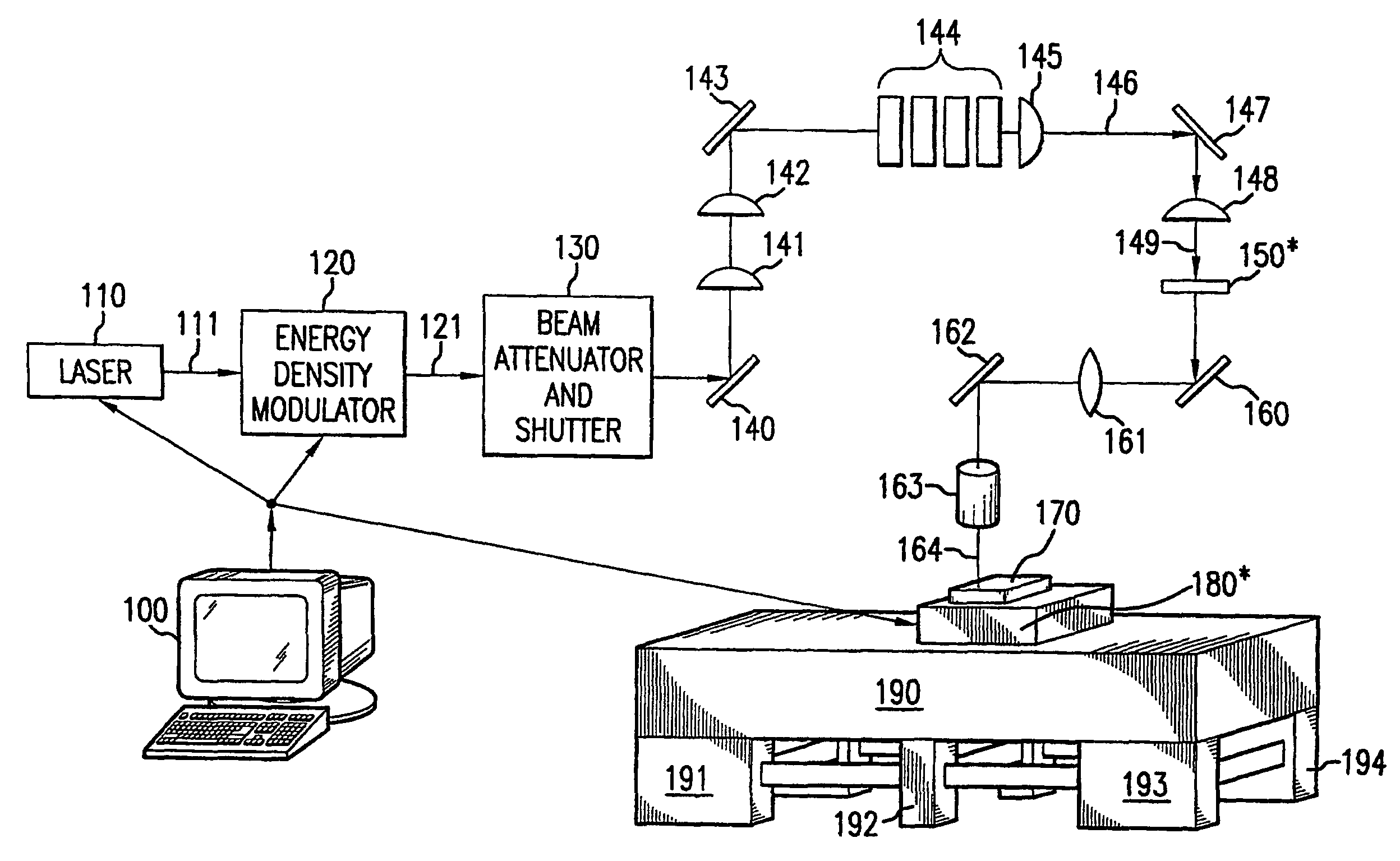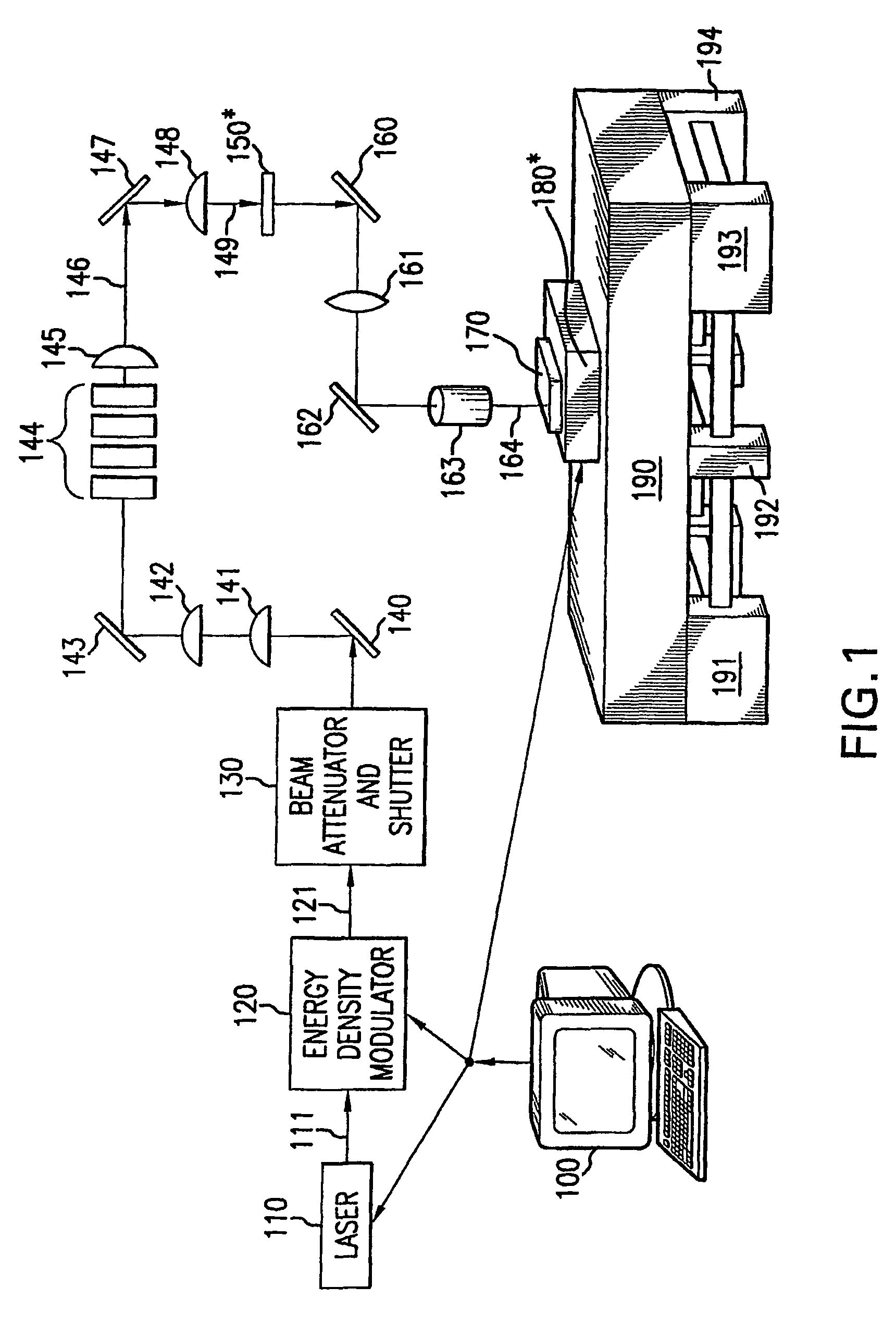System for providing a continuous motion sequential lateral solidification for reducing or eliminating artifacts in overlap regions, and a mask for facilitating such artifact reduction/elimination
a technology of overlap region and sequential lateral solidification, which is applied in the field of system and mask for processing a thin film semiconductor material, can solve problems such as microstructural artifacts, and achieve the effect of reducing or eliminating artifacts
- Summary
- Abstract
- Description
- Claims
- Application Information
AI Technical Summary
Benefits of technology
Problems solved by technology
Method used
Image
Examples
Embodiment Construction
[0024]Certain systems and methods for providing a single scan, continuous motion SLS are described in International Publication No. 02 / 086954 (the “'954 Publication”), the entire disclosure of which is incorporated herein by reference. The '954 Publication explicitly describes and illustrates the details of these systems and methods, and their utilization of microtranslations of a sample, which may have an amorphous silicon thin film provided thereon that can be irradiated by irradiation beam pulses so as to promote the sequential lateral solidification on the thin film, without the need to microtranslate the sample and / or the beam relative to one another to obtain a desired length of the grains contained in the irradiated and re-solidified areas of the sample. Similar to the system described in the '954 Publication, an exemplary embodiment of a system for carrying out the continuous motion SLS processing of amorphous silicon thin films and reduce or eliminate microstructural artifa...
PUM
| Property | Measurement | Unit |
|---|---|---|
| width | aaaaa | aaaaa |
| width | aaaaa | aaaaa |
| thickness | aaaaa | aaaaa |
Abstract
Description
Claims
Application Information
 Login to View More
Login to View More - R&D
- Intellectual Property
- Life Sciences
- Materials
- Tech Scout
- Unparalleled Data Quality
- Higher Quality Content
- 60% Fewer Hallucinations
Browse by: Latest US Patents, China's latest patents, Technical Efficacy Thesaurus, Application Domain, Technology Topic, Popular Technical Reports.
© 2025 PatSnap. All rights reserved.Legal|Privacy policy|Modern Slavery Act Transparency Statement|Sitemap|About US| Contact US: help@patsnap.com



